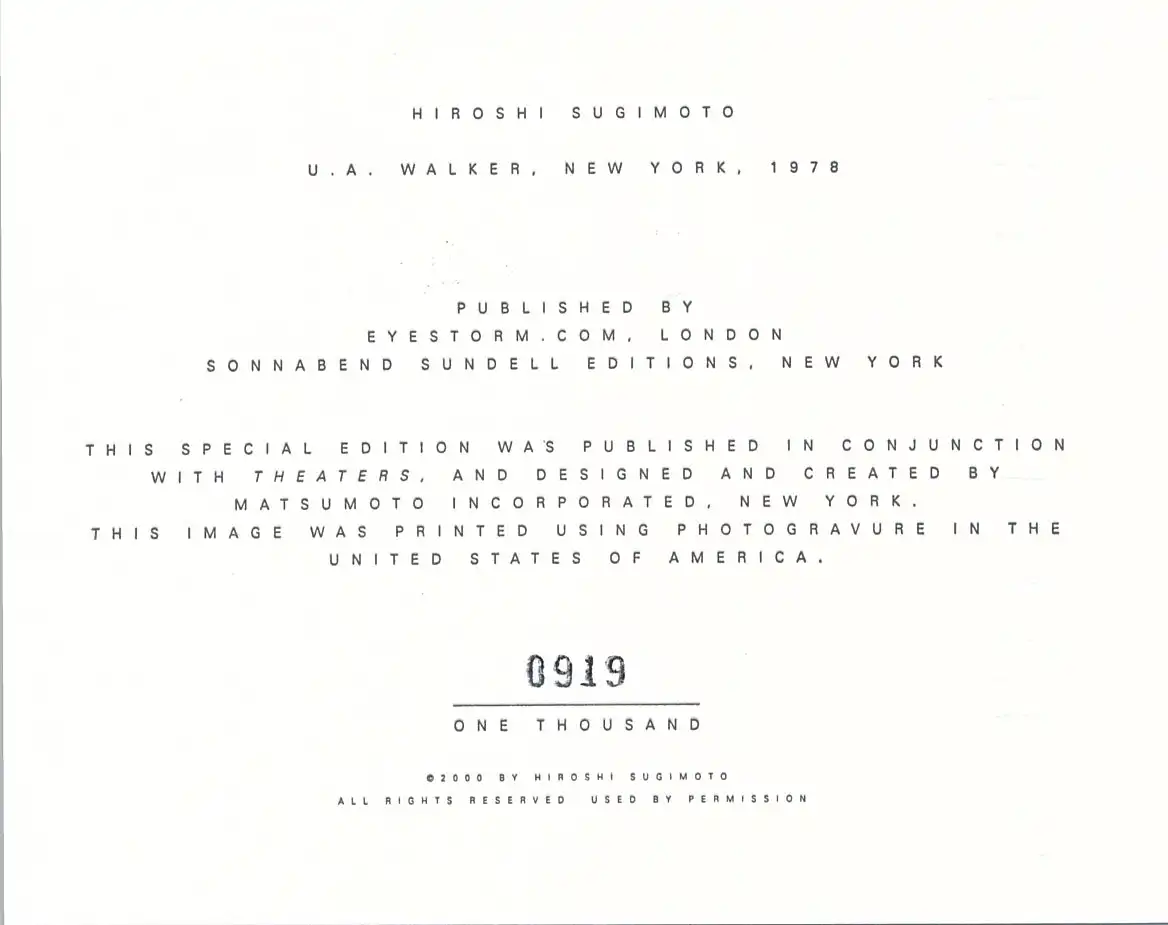Hiroshi Sugimoto
U.A. Walker, New York, 1978
Hand signed photogravure
paper size: 17 x 21 inches
image size: 11 3/4 x 14 3/4 inches
Edition: 1,000
Printed on acid-free BFA Paper
Hand signed in pencil by Hiroshi Sugimoto lower right recto
Specific numbered impression of 1,000 printed on white card
Published by Sonnabend Sundell Editions and Eyestorm, 2000
paper size: 17 x 21 inches
image size: 11 3/4 x 14 3/4 inches
Edition: 1,000
Printed on acid-free BFA Paper
Hand signed in pencil by Hiroshi Sugimoto lower right recto
Specific numbered impression of 1,000 printed on white card
Published by Sonnabend Sundell Editions and Eyestorm, 2000








